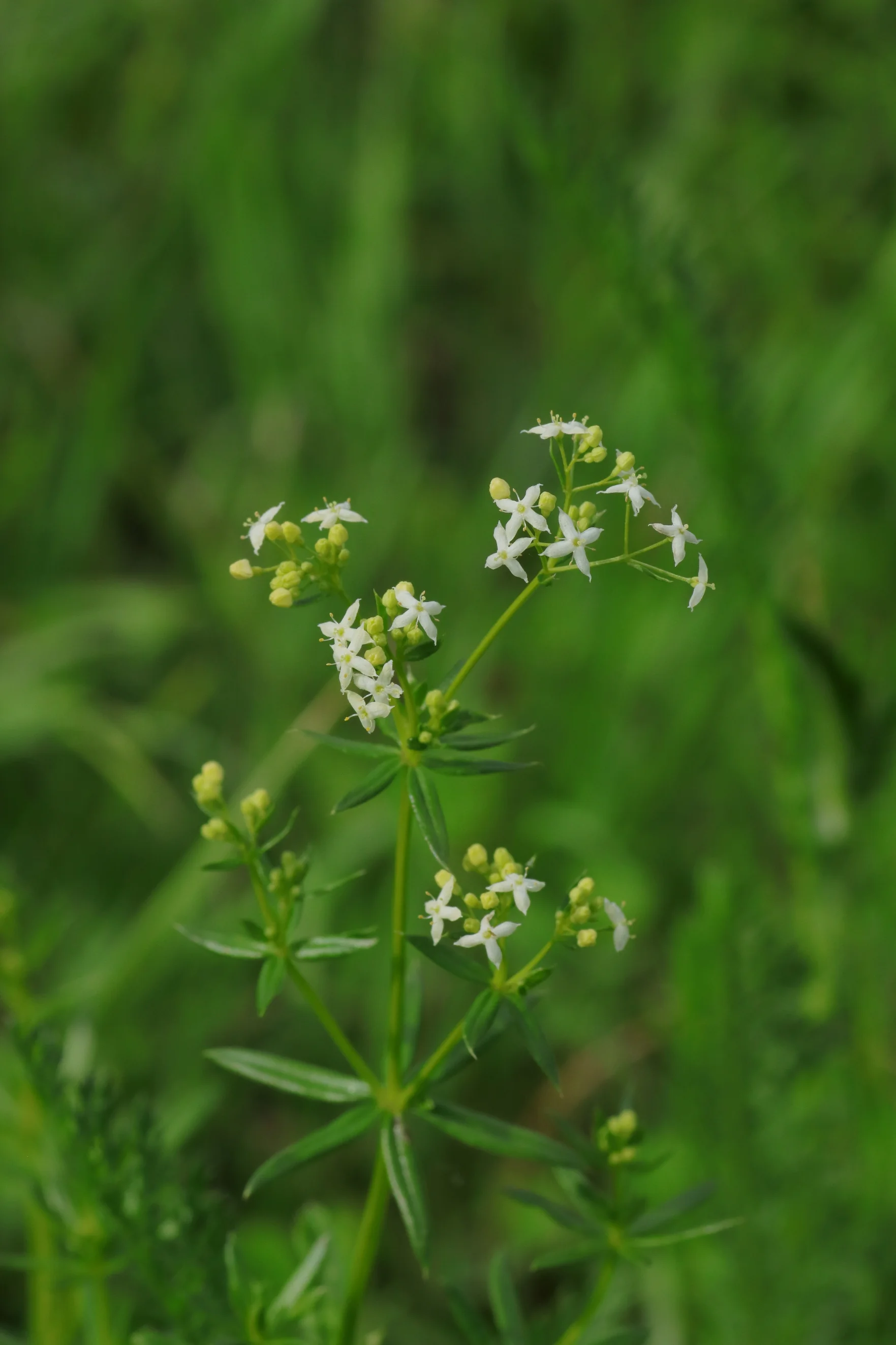The white bedstraw is a well-known meadow plant. It used to be used as a substitute for rennet in the production of cheese. Nowadays, however, this has been forgotten.


Occurrence and distribution: White bedstraw is a widespread plant and can be found almost all over Europe. It grows on meadows, semi-dry grasslands and in bushes, among other places. The plant can also be found along roadsides and in ruderal areas. It prefers dry to slightly moist, nutrient-rich soils. In the Alps, bedstraw can be found at altitudes of up to 2,100 metres.
Plant description
Growth form: White bedstraw is a perennial, herbaceous plant. The plant is considered a hemicryptophyte with overwintering bulbs close to the ground or on earth shoots. Deep roots develop below the ground. The white bedstraw has an upright growth habit and reaches a height of between 40 and 110 cm (1 ft 3 in to 3 ft 6 in). The stem is thin and hairless. It also has a distinctly square structure. A deep root ball forms underground.
Leaves: The leaves are arranged in whorls on the stems. The individual leaves have only a single leaf vein, which sits in the middle. On the upper side the leaves have a dark green and glossy surface. The leaves have fine jagged edges. Between 4 and 10 individual leaves (rarely more) form per whorl. They have a linear shape and are up to 8x as long as they are wide.
Flowers: White bedstraw forms dispersed inflorescences with a large number of individual flowers. The petals are white to creamy yellow in colour. They have a lanceolate shape, tapering at the end. In the middle the four petals grow together with the stigma and the flower base. The stigma has a rounded, hemispherical shape and is light green in colour. Yellow anthers are attached to elongated white stamens. The plants are pollinated mainly by flies and other hymenoptera. The flowering period is from June to September.
Fruits: The fruits consist of two parts. They have a slightly wrinkled surface and are roundish in shape. As soon as all the seeds are ripe, the dry fruits fall apart, dropping the seeds on the ground.
Uses of the plant
Use as a dye (like with Galium vernum): A red dye can be produced from the root. This is suitable for dying wool and clothes, among other things. Nowadays, however, the plant is no longer relevant in industry, as there are many different synthetic dyes. The plant should also no longer be used at home, as some of it is already listed as endangered on the Red List. The dye is mainly contained in the root.
Use as an additive to cheese and rennet: The dye contained in the root of the white bedstraw was used to colour Chester cheese. Nowadays, the plant is still partly used in the production of cheese. The dye gives the cheese a dark yellow, slightly orange colour. The flowers, on the other hand, used to be used as a rennet for milk. A protease is found in the fresh juice of the herb. This supports the coagulation of milk and is suitable for the production of soft cheese.
-> Note on the use of the plant: In old literature, “white bedstraw” is not explicitly mentioned as Galium album. There, it is often written of the “Galium mollugo agg. – species group within the bedstraw family. It should be noted here that all species within this species group were used for the same purpose.
Folk names & name origin
Folk names: The white bedstraw can be found under various folk names. These include Butterstiel (butter stalk), Gliedekraut (limbwort), Liebfrauenstroh (sweetheart’s straw), Lidgängchen and Megerkraut (no translation can be made).
Name origin: The botanical genus name “Galium” is derived from the ancient Greek word “gala / γάλα” (milk). This can also be seen in the German name “Labkraut”. In former times, it was used for ” souring milk”. Since the plant has a similar effect to natural rennet (an enzyme for coagulating milk), this is where these name references came from. The botanical species name “album” is derived from the Latin word “albatus”. This can be translated into english as “white clothed”. This refers to the white flowers of the plant.
Special features of the genus “Galium“: The species group “Galium mollugo agg.” was not differentiated in the old botany books into the two species known today. Here, only the designation “Galium mollugo L.” coined by Linné was used. This is also the case in Losch “Kräuterbuch – Unsere Heilpflanzen in Wort und Bild” -> source for this can be found in: uses of the plant. The drawing in this book also looks like white bedstraw instead of meadow bedstraw. Nevertheless, the common Latin name for the “meadow bedstraw” was also used here. The species “Galium album Mill. is more common in Germany.
Endangerment of the plant
Endangerment of the plant: The white bedstraw is listed as not endangered on the German Red List.
Distribution codes: A, AV, M1, M2, F, K
Very nice post. I just stumbled upon your blog and wanted to mention that I have truly enjoyed browsing yoսr weblog posts. In any case I’lⅼ be subscribing on your feed and I hope you write once more soon!
Hello, I enjoy reading through your articles. I wanted to write a little comment to support you.